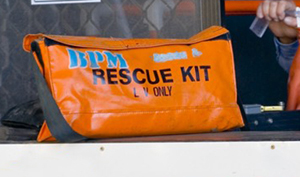Introduction
In today's fast-paced workplace, ensuring the safety and security and health of your workforce is vital. One aspect that commonly gets forgotten is hand-operated handling, which refers to the procedure of training, carrying, Browse this site pressing, or drawing items. In this post, we will explore efficient hand-operated handling methods that can aid maintain your labor force risk-free and healthy. We will certainly additionally talk about the importance of emergency treatment training, including CPR training and mental health first aid, and just how these components add to a more secure work environment.
Manual Handling Methods: Maintaining Your Workforce Safe and Healthy
Manual handling techniques are essential for protecting against injuries in the workplace. Inappropriate training methods can lead to bone and joint problems (MSDs), which make up a significant variety of work environment injuries. To efficiently alleviate risks related to hands-on handling, organizations have to carry out training programs that emphasize appropriate techniques.
Understanding Handbook Taking care of Risks
Before diving right into certain techniques, it's essential to identify the threats associated with hand-operated handling tasks. According to study, bad training techniques can cause:
- Back pain Muscle strains Joint injuries Chronic problems influencing mobility
Recognizing these threats allows companies and workers alike http://chancekjjs322.iamarrows.com/recognizing-the-fundamentals-of-corporate-first-aid-training-programs to prioritize safety.
The Relevance of Training
Training plays an important function in minimizing hands-on handling-related injuries. It's not almost understanding just how to lift appropriately; it's likewise about understanding body technicians and functional designs. A detailed manual handling training course ought to cover:

- Proper lifting techniques Risk evaluation skills Use of equipment like trolleys or forklifts
Additionally, incorporating first aid courses into workplace training makes sure that everyone knows just how to react efficiently in case of an injury.

Basic Lifting Techniques
Here are some foundational strategies that everyone ought to understand:
1. Assess the Load
- Before lifting anything, always examine its weight and shape. If it seems as well hefty or awkwardly shaped, look for aid or use mechanical aids.
2. Positioning
- Stand near to the object. Place your feet shoulder-width apart for balance. Bend your knees while keeping your back straight.
3. Grip
- Ensure a company hold on the object. Use both hands when possible.
4. Lifting
- Lift with your legs instead of your back. Keep the things near to your body as you stand up.
5. Carrying
- Maintain a secure pose while walking. Avoid turning your body; instead, turn your whole body by relocating your feet.
6. Setting Down
- Lower the things by bending at the knees again. Ensure that you put it down carefully without dropping it.
Using Equipment for Hands-on Handling
Investing in equipment created for manual handling can dramatically decrease injury danger. Below's a checklist of commonly made use of tools:
|Equipment Type|Purpose|| ----------------|--------------------------------------|| Trolleys|For transferring heavy products|| Lifts|For lifting people or heavy items|| Pallet Jacks|For moving palletized tons|
Incorporating Emergency treatment Training
While minimizing risks via appropriate hand-operated handling is critical, being prepared for emergencies is similarly vital. This is where emergency treatment training comes into play.
Types of Emergency treatment Courses Available
General Workplace First Aid
- Covers standard emergency treatment abilities required in various work environments.
CPR Training
- Teaches lifesaving cardiopulmonary resuscitation methods crucial throughout heart emergencies.
Corporate First Aid Training
- Tailored programs especially created for corporate environments focusing on usual work environment injuries.
Mental Health First Aid
- Provides skills to help colleagues battling with mental health issues-- an important part often forgot in conventional emergency treatment courses.
Childcare Emergency treatment Course
- Focuses on responding to emergencies including children-- perfect for those working in educational settings or child care centers.
Online First Aid Course
- Offers adaptability for workers to learn at their very own speed while still covering all essential content.
Creating a Society of Safety
To keep a setting for safety and security, cultivating a culture where employees really feel encouraged to speak up regarding risks is essential.
1. Encourage Open Communication
Encourage workers to report unsafe conditions without worry of revenge; this fosters an open discussion regarding prospective threats related to hand-operated handling tasks.
2. Regular Training Sessions
Hold routine workshops on hands-on handling techniques and refresher courses on emergency treatment courses-- keeping abilities sharp ensures readiness throughout emergencies.
3. Promote Psychological Well-being
Since psychological health plays an essential role in general well-being, companies should promote mental wellness awareness together with physical safety and security measures.
FAQs
Q1: What are the signs that I need hands-on handling training?
A1: If employees often raise hefty things or report discomfort after lifting jobs, it's time for detailed manual handling training sessions.
Q2: Just how commonly should we perform first aid training?
A2: Preferably, first aid training ought to take place yearly; nonetheless, more constant sessions may be advantageous based on workplace threats or changes in staff.
Q3: Can on the internet programs be as efficient as classroom-based training?
A3: Yes! On-line training courses have ended up being significantly interactive and give important sources-- just ensure they fulfill qualification requirements!
Q4: What type of tools should our office spend in?
A4: Purchase trolleys, lifts, pallet jacks, and ergonomic furniture-- these tools aid minimize injury from inappropriate hands-on handling practices.
Conclusion
In final thought, understanding proper manual handling strategies is crucial for fostering a secure and healthy and balanced labor force atmosphere. By focusing on thorough training-- consisting of crucial subjects like first aid courses-- you empower staff members with expertise crucial for both prevention and reaction throughout emergencies like mishaps associated with messed up loads.

Remember: Safety and security isn't simply a plan; it's a culture developed with regular effort from every person within an organization!
By giving reliable handbooks on these methods while stressing continuous discovering via certifications such as mouth-to-mouth resuscitation or Mental Health Emergency Treatment Courses-- business can develop work environments where safety and security thrives!